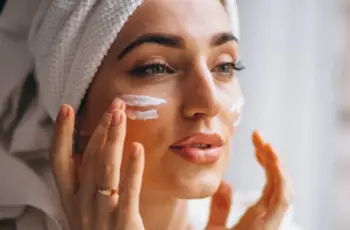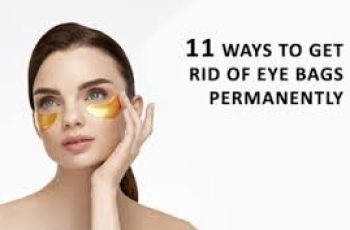
Can Peptides and Retinol Be Applied Together? Your Ultimate Skincare Guide
Skincare routines can seem simple at first glance. But once you dive in, it quickly becomes clear—there’s a lot more to it than just washing your face and slapping on some cream.
Especially when ingredients like peptides and retinol come into play, things can get confusing fast. Their scientific names and powerful benefits make them sound both promising and intimidating.
Today, we’ll break it all down so you can understand how peptides and retinol work—and whether they can be used together. Spoiler alert: yes, they can, but timing and layering are key.
What Are Peptides?
Peptides are short chains of amino acids. They are the basic building blocks your skin needs to produce collagen, elastin, and other proteins that keep it firm, elastic, and youthful.
Your body produces peptides naturally. But as we age, their production slows down. That’s where skincare peptides come in—they replenish what your skin starts losing.
Key Benefits of Peptides in Skincare:
Smooth fine lines and reduce wrinkles
Strengthen the skin barrier
Help the skin feel and appear firmer
Offer anti-inflammatory effects
Stimulate natural collagen production
Aid in repairing skin damage
Improve skin tone and texture
Peptides are generally well-tolerated and can benefit all skin types when used correctly.
What Is Retinol?
Retinol is a form of vitamin A, one of the most effective ingredients in skincare. It works deep within the skin to speed up cell turnover and stimulate collagen production.
Key Benefits of Retinol:
Reduces fine lines and wrinkles
Improves skin tone and clarity
Fights acne and reduces breakouts
Fades dark spots and hyperpigmentation
Unclogs pores and refines skin texture
Helps treat sun damage and signs of aging
But retinol is powerful and can also be irritating if not introduced properly.
Can You Use Peptides and Retinol Together?
Yes, you can use peptides and retinol in the same routine. But it requires a thoughtful approach. Both are potent actives and must be layered in a way that reduces irritation and maximizes results.
Using them together works best when you apply retinol first, followed by peptides to soothe, strengthen, and lock in moisture. This order helps balance out any potential dryness or irritation from retinol.
Why This Combo Works
Retinol is all about renewal. It removes old skin cells, increases cell turnover, and exposes fresh, new skin underneath. But in doing so, it can compromise your skin’s barrier and lead to dryness.
Peptides, on the other hand, are nurturing. They help rebuild the skin barrier, enhance collagen, and reduce inflammation. When used after retinol, they provide hydration and healing, making your skin more resilient.
Together, they offer both repair and renewal—an ideal combination for anti-aging and skin improvement.
Should Peptides or Retinol Go First?
If you’re layering them in the same routine, always start with retinol first, then follow with a peptide-infused product.
This sequence allows the retinol to penetrate and do its job, while peptides support skin recovery.
This routine will ensure your skin receives the full benefits of both ingredients without being overwhelmed.
Morning vs. Evening: When to Apply What
Here’s a smart way to use both without layering them together every time:
Morning: Use peptides. They support your skin’s barrier and protect it against environmental stressors.
Evening: Use retinol. Your skin naturally repairs itself at night, and retinol enhances that process.
This approach respects your skin’s circadian rhythm—its internal clock that regulates repair and protection cycles.
Why Morning Peptides + Evening Retinol Works So Well
In the morning, peptides boost your skin’s defense system. They prep your face to deal with pollution, UV rays, and other free radicals.
At night, retinol accelerates skin regeneration. It unclogs pores, repairs damage, and improves skin texture while you sleep.
By splitting them between morning and evening, your skin gets maximum benefit with minimal irritation.
Important Tip: Always Use Sunscreen with Retinol
Retinol increases your skin’s sensitivity to sunlight. That’s why dermatologists insist you wear SPF 30 or higher every day—even when it’s cloudy.
Protecting your skin from UV rays prevents further damage and ensures that retinol works effectively.
Are Peptides Effective for Wrinkles?
Yes, peptides are excellent at reducing the appearance of wrinkles. They stimulate collagen production, which gives skin its firmness and elasticity.
When you use peptides regularly, you’ll notice smoother, firmer skin and fewer lines. It’s one of the reasons peptides are often found in anti-aging creams and serums.
How Do Peptides Work in Skincare?
Peptides work by sending signals to your skin. They tell it to boost collagen production, reduce inflammation, and repair itself.
Think of peptides as “messenger molecules” that wake up your skin’s natural healing process. When used over time, they promote long-term skin resilience.
What Ingredients Should Peptides Not Be Mixed With?
One common skincare myth is that peptides and vitamin C don’t get along. While it’s partially true, the real issue is about formulation, not the ingredients themselves.
When not formulated properly, vitamin C (especially in its acidic L-ascorbic acid form) may destabilize peptides, making both ingredients less effective.
If you’re unsure, avoid layering peptides and vitamin C in the same routine. Use vitamin C in the morning, and peptides in the evening, or vice versa.
Can You Use Serums Over Retinol?
It depends on the serum. In general, skincare products should be applied from thinnest to thickest.
Most serums are water-based and lightweight, which means they absorb quickly and should go before creams or oils.
If your retinol is in serum form, apply it first after cleansing. Then use a peptide serum or moisturizer on top to nourish and hydrate.
If your retinol is in cream form, you can layer a light serum underneath—but make sure it doesn’t interfere with retinol’s effectiveness.
Should I Use Separate Serums for Retinol and Peptides?
Yes. Using two separate serums—one with retinol and one with peptides—gives you better control over how each ingredient is applied.
You’ll also be able to space them out (morning and evening), helping your skin tolerate both ingredients better.
You can also look for “buffering” products with peptides that calm the skin after retinol application.
How to Introduce Retinol and Peptides to Your Routine
If you’re new to either ingredient, start slow:
Use retinol 2–3 nights a week to begin with.
Apply peptides in the morning or on the nights you don’t use retinol.
Watch for signs of irritation like redness or peeling.
Always moisturize and wear SPF.
Over time, as your skin builds tolerance, you can increase retinol usage to every other night or even nightly.
Signs That Retinol May Be Too Strong for You
Retinol is potent. If you experience excessive dryness, irritation, redness, or flaking, you may be using too much or applying it too frequently.
Try switching to a lower-strength formula, using it less often, or adding moisturizing peptides afterward to support your skin barrier.
Final Thoughts: Peptides + Retinol = A Powerful Skincare Duo
When used correctly, peptides and retinol are a powerful duo. Retinol improves skin turnover and reduces signs of aging. Peptides strengthen the skin and support collagen production.
Whether used together or separately, they help restore your skin’s radiance, firmness, and overall health.
Just remember: timing, layering, and patience are key. Start slow, build up gradually, and always listen to your skin.
Want More Skincare Tips and Ingredient Guides?
Follow us on Instagram at @Procoal for daily skin tips, ingredient breakdowns, and tutorials. Got questions? Send us a DM—we’re always happy to help!
And don’t forget to subscribe to our YouTube channel The Green Sofa for expert videos, product demos, and deep dives into all things skin.


